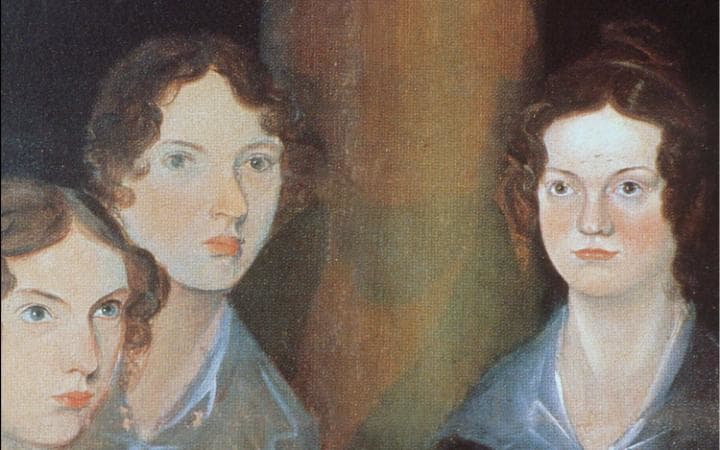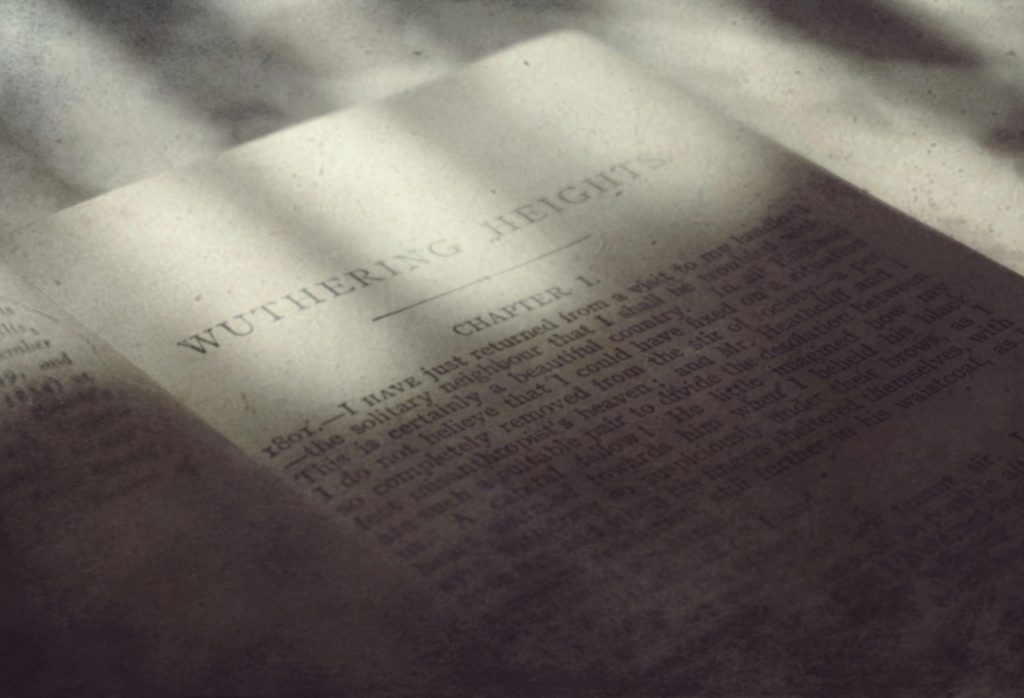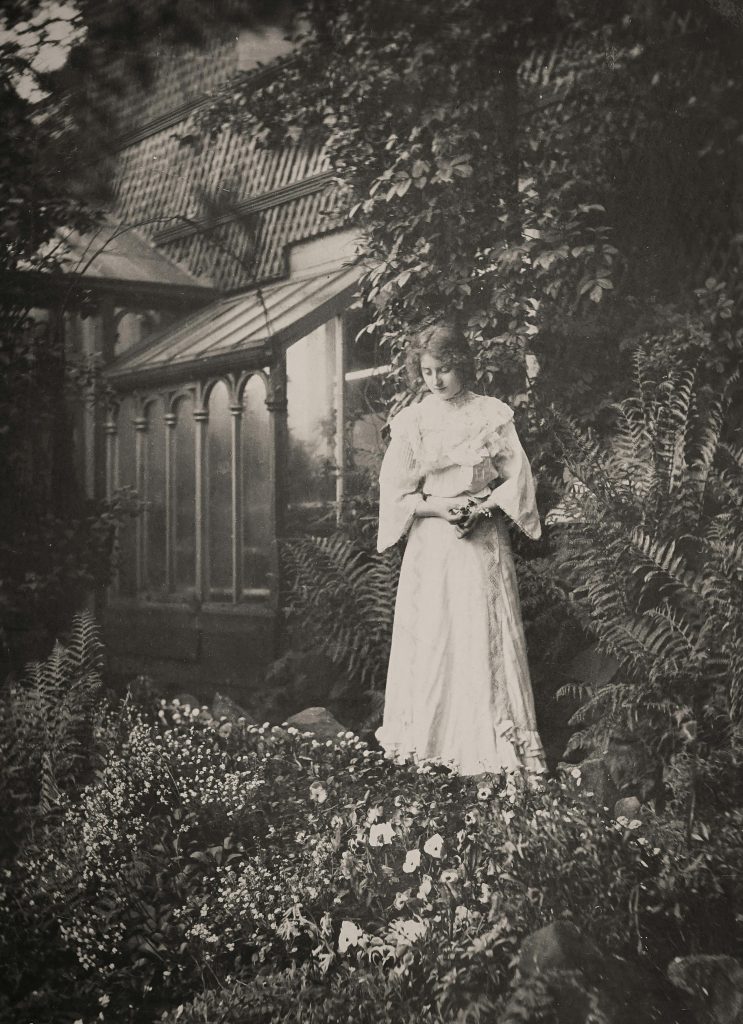Immerse yourself in the enigmatic world of ‘Wuthering Heights’ and accompany its characters on a captivating journey to the hauntingly beautiful Earnshaw Estate. In this timeless classic by Emily Brontë, love, passion, and revenge intertwine, creating a captivating narrative that has bewitched readers for generations.
Set against the backdrop of the rugged Yorkshire moors, ‘Wuthering Heights’ is a tale of forbidden love, fierce rivalries, and the destructive power of obsession. Delve into the complex relationships between Heathcliff and Catherine Earnshaw, their tumultuous love affair, and the tragic consequences that ripple through the generations. Brontë’s mesmerizing prose brings to life a cast of unforgettable characters, each struggling with their own inner demons.
From the brooding and mysterious Heathcliff to the headstrong and independent Catherine, these characters will capture your imagination and keep you on the edge of your seat. Unravel the secrets of the Earnshaw Estate as you explore themes of social class, gender norms, and the supernatural. ‘Wuthering Heights’ stands as a testament to the enduring power of love and its ability to transcend time and circumstance. Step into the world of ‘Wuthering Heights’ and be transported to a realm of passion and intrigue that will leave an indelible mark on your literary journey
Brief overview of the author, Emily Bronte
Emily Brontë (born July 30, 1818, Thornton, Yorkshire, England; died December 19, 1848, Haworth, Yorkshire) was an English author and poet who wrote just one novel, Wuthering Heights (1847), a stirring tale of passion and hatred on the Yorkshire moors. Emily Brontë, the most prominent of the three Brontë sisters, left little documentation of her life due to her silence and lack of correspondence. Her sole work only adds to the mystery of her spiritual existence.

After their mother died in 1821, the children were left alone in the desolate moorland rectory. The children were taught at home until Charlotte and Emily spent a year at the Clergy Daughters’ School in Cowan Bridge, Lancashire. Emily joined Charlotte at Miss Wooler’s school at Roe Head in 1835, but she was homesick and barely stayed three months. Emily resigned after six grueling months teaching at Miss Patchett’s Law Hill school near Halifax in 1838.
Charlotte wanted to keep a girls’ school in Haworth to keep the family together. She and Emily studied foreign languages and school management at the Pension Héger in Brussels in February 1842. Emily pined for home and the vast moorlands, yet Brussels seemed to prefer her to Charlotte. Charlotte’s decorum was harder to understand than her desire.
Emily moved to Haworth permanently in October after her aunt died.Charlotte found Emily’s poetry in 1845 and discovered that all three sisters—Charlotte, Emily, and Anne—had written verse. Poems by Currer, Ellis, and Acton Bell, the sisters’ pseudonyms, was published a year later and comprised 21 of Emily’s poems. Later criticism has agreed that Emily’s writing alone shows actual literary brilliance.
The sisters spent £50 and sold two copies.J. Cautley Newby of London accepted Emily’s Wuthering Heights and Anne’s Agnes Grey for joint publication by midsummer 1847, but the three volumes were delayed until their sister Charlotte’s Jane Eyre, which was immediately and tremendously successful. Wuthering Heights was criticized for being excessively vicious, animal-like, and clumsy when published in December 1847. Only later did it become one of the best English novels.
Plot summary of Wuthering Heights
Wuthering Heights is told in chapters to Lockwood, the narrator. Lockwood rents Thrushcross Grange in Yorkshire and learns about two local families’ histories. Ellen Dean, a housekeeper who had lived with one of the two families her whole life, tells him:
Earnshaw, a gentleman farmer from Wuthering Heights, traveled to Liverpool in 1760 for business. He found a gypsy-looking boy who had been abandoned on the streets and brought him home to join his wife, son Hindley, daughter Catherine, Joseph, a manservant, and Ellen, a young maid. Earnshaw named his kid Heathcliff after his deceased son.

Besides Catherine, who was younger than Heathcliff and became close friends with him, the rest of the household opposed the unusual kid. Hindley felt replaced by Heathcliff, despite being several years older and the legitimate son and heir. Heathcliff exploited Earnshaw to gain his way through Hindley’s bullying. Heathcliff was a peculiar, silent youngster who seemed unaffected by Hindley’s strikes, while being spiteful. Earnshaw’s wife died. Hindley was sent to college as a last attempt to make him a good kid and relieve household pressures.
Earnshaw’s health failed and he became increasingly estranged from his family. In his peevish old age, he worried that everyone loathed Heathcliff because Earnshaw liked him. He disliked his daughter Catherine’s charm and mischief. When he died, Catherine and Heathcliff were devastated but consoled one other with ideas of heaven.
Hindley returned, about twenty. Catherine was eleven and Heathcliff twelve. Everyone at Wuthering Heights was surprised when Hindley married Frances, a young woman. Although Heathcliff and Catherine remained close, Hindley utilized his new power as home head to relegate Heathcliff to a servant. Catherine taught Heathcliff her lessons and played with him in the fields or on the moors all day, ignoring their punishments.
They hurried to the Lintons’ more sophisticated Grange, where Edgar, thirteen, and Isabella, eleven, lived. Catherine and Heathcliff screamed and made faces at the spoilt, delicate Linton children through the glass. The wilder youngsters fled as the Lintons yelled for aid, but Catherine was caught by a bulldog and brought inside. When the Lintons discovered Miss Earnshaw, they cared for her and expelled Heathcliff.

After five weeks at the Grange, Catherine returned dressed and acting like a young lady, delighting Hindley and his wife and saddening Heathcliff, who believed she had moved beyond him. In the following years, Catherine fought to maintain her connection with Heathcliff and associate with the exquisite Linton children.
After giving birth to Hareton, Frances died of TB. Hindley became depressed and alcoholic, causing domestic upheaval. Heathcliff hated Hindley after being mistreated. Catherine fell for Edgar Linton’s riches and etiquette, but she loved Heathcliff more. Heathcliff fled when Edgar and Catherine got engaged. After searching for Heathcliff all night in a storm, Catherine became ill and went to the Grange. Her sickness killed the Linton parents. Catherine married Edgar aged 18 or 19.
They got along for almost a year until Heathcliff reappeared. His manners, education, and wealth were strangely obtained. Edgar was less thrilled to see him than Catherine. Heathcliff stayed at Wuthering Heights and paid Hindley’s gambling debts to obtain financial power. Edgar was increasingly displeased with Heathcliff’s friendship with Catherine, straining his ties with the Lintons.
After a heated fight, Heathcliff left the Grange to avoid Edgar’s attendants, Catherine was upset at both men, and Edgar was enraged with Heathcliff and his wife’s behavior. Catherine stayed in her room for days. For revenge on Edgar, Heathcliff eloped with Isabella, who was captivated by his charming appearance. Edgar did not stop the marriage because he could not forgive Isabella’s infidelity. Catherine grew overheated and delirious and nearly died, but Edgar cared for her.
Catherine remained fragile and appeared like she would die a few months later. A pregnant woman. When Heathcliff and Isabella returned to Wuthering Heights, Isabella wrote to Ellen about how her cruel husband tormented her and how much she regretted her marriage. Ellen visited them to help Isabella. Heathcliff asked to see Catherine after she told them about her health.
Heathcliff visited the Grange a few days later when Edgar was at church. He returned to Catherine with passion, forgiving each other for their betrayals. Catherine fainted, Edgar reappeared, Heathcliff departed. Catherine died that night after giving birth to a daughter. Edgar was devastated, and Heathcliff urged Catherine’s ghost to haunt him. A few days later, Hindley attempted to kill Heathcliff, but Heathcliff nearly did. Isabella fled Wuthering Heights and had Linton near London. His sister Catherine died months before Hindley.
Cathy, Catherine and Edgar’s daughter, was loved and charming. She was raised in the Grange and oblivious of Wuthering Heights, Heathcliff, or her cousin Hareton. While roaming the moors, she spotted the farmhouse and was horrified that Hareton, an ignorant rustic, could be related to her. Ellen warned her not to return and revealed Heathcliff’s conflict with Edgar, Cathy’s father.

Edgar took Linton to the Grange when Isabella died when he was twelve. Linton was bossy and effeminate, but Cathy liked having a playmate. However, Heathcliff despatched Joseph to retrieve his son to Wuthering Heights that day, and Cathy found her cousin gone the next morning. She recovered from her sadness and enjoyed her cheerful childhood.
Cathy and Ellen wandered onto Heathcliff’s field on her sixteenth birthday, and he invited them to Wuthering Heights to see Linton. Cathy enjoyed reuniting, and Heathcliff wanted to encourage the cousins to date to inherit Edgar’s estate. Edgar prevented Cathy from contacting Heathcliff after they came home, calling him evil. Cathy and Linton exchanged love letters in secret. Ellen discovered out and stopped it.
Edgar got sick. Because Linton broke his heart for Cathy, Heathcliff urged her to return to Wuthering Heights. She did, and Linton was a charming but bullying invalid. Ellen became ill and couldn’t stop Cathy from visiting Wuthering Heights daily. Cathy had to help Linton and hated Hareton for being clumsy and illiterate. Ellen informed Edgar of the visits, and he prohibited Cathy to continue.
Edgar was sick and didn’t know Linton’s horrible health and character, so he decided Cathy should marry him since Linton would inherit the Grange. It was set up so Linton and Cathy met outside. Linton became unwell and appeared afraid of something—his father was pressing him to court Cathy. Heathcliff almost kidnapped Cathy and Ellen and told them Cathy couldn’t go home to visit her dying father until she married Linton. Cathy married Linton and escaped to visit Edgar before his death.
Cathy was brought to Wuthering Heights by Heathcliff to care for Linton, who was dying, and to free up the Grange so he could rent it to Lockwood after Edgar’s funeral. Heathcliff told Ellen that he was still obsessed with Catherine and had gone to see her corpse when Edgar’s burial was dug.
Cathy cared for Linton alone, and after he died, she was unfriendly to Heathcliff, Hareton (who loved her), Joseph, and Zillah, the housekeeper. She eventually felt lonely and started teaching Hareton to read.
Around Lockwood’s time at the Grange. After months away, he returns to find:
Heathcliff became increasingly odd and unable to focus on the world, as if Catherine’s ghost forbade him. He almost stopped eating and sleeping, and Ellen discovered him dead with a violent smile one morning. He was buried with Catherine as requested. Hareton mourned him but was too happy with the younger Cathy. Hareton and Cathy plan to marry and relocate to the Grange after the novel.
Themes and symbolism in Wuthering Heights
Although it may appear that romance is the overarching topic of Wuthering Heights, the work is actually about a great deal more than just a romantic love story. Heathcliff and Cathy’s (non-consummated) romance is intertwined with anger, retribution, and social class, which is the topic that is consistently prevalent in Victorian fiction.
Affection
Throughout the course of Wuthering Heights, there is a contemplation on the essential characteristics of love. The bond between Cathy and Heathcliff is, without a doubt, the most significant one. This relationship is all-consuming and causes Cathy to entirely identify with Heathcliff, to the point that she declares, “I am Heathcliff.” Their love, on the other hand, is everything from straightforward.
They are willing to betray one another as well as themselves in order to marry a person for whom they feel a more subdued sort of love that is also more convenient. It is interesting to note that Cathy and Heathcliff’s love, despite the depth of their feelings for one another, is never completed. In spite of the fact that Heathcliff and Cathy are reunited in their afterlife, they do not find serenity in their memories. Instead, they take the form of ghosts and roam the moorland.
The love that develops between young Catherine and Hindley’s son, Hareton, is a more subdued and gentler version of the love that exists between Cathy and Heathcliff, and it seems poised to have a happy conclusion.
Despair and retribution
In the same way that he used to love Cathy, Heathcliff now hates her with the same ferocity, and the majority of his acts are driven by a desire for revenge. On multiple occasions throughout the course of the book, he resorts to exacting some type of retribution from those individuals who, in his opinion, had mistreated him. These individuals include Hindley (and his offspring) for mistreating him, as well as the Lintons (Edgar and Isabella) for stealing Cathy away from him.
In spite of the fact that he is completely devoted to Cathy, he does not behave in a particularly kind manner toward Catherine, who is her daughter. Rather than that, he kidnaps her, coerces her into marrying his sickly son, and treats her poorly in general while playing the part of the archetypal villain.
Class in society
The novel Wuthering Heights is completely submerged in the class-related difficulties that were prevalent throughout the Victorian era. These issues were not limited to the question of wealth alone. The characters demonstrate that someone’s status in society was mostly determined by factors such as their birth, the source of their money, and the relationships they had with their family, and that people generally accepted their position in society.

The novel Wuthering Heights depicts a society that utilizes a class system. When compared to the Earnshaws, the Lintons belonged to the professional middle class, while the Earnshaws were a little lower on the social hierarchy. A member of the lower middle class, Nelly Dean was employed in non-manual labor (servants were considered to be of higher status than manual laborers). When Mr. Earnshaw openly liked Heathcliff, he went against the conventions of society. Heathcliff, who was an orphan, had previously occupied the lowest rung in society in the Wuthering Heights universe.
Cathy’s decision to marry Edgar rather than Heathcliff is also affected by her social standing. Despite the fact that Heathcliff is now a well-dressed, wealthy, and educated man despite his return to the heath, he is still considered an outcast by society. In addition, Heathcliff’s attitude toward Hareton, Hindley’s son, can be explained by class conflict. He humiliates Hareton in the same manner that Hindley had humiliated him, thereby carrying out a class-based vengeance in the other direction.
Multiple Narrators Within a Single Frame Story Constitutes a Literary Device
The majority of the story of Wuthering Heights is told by two narrators: Lockwood and his own narrator, Nelly. Nelly imparts to Lockwood information regarding the happenings that took place in Wuthering Heights and Thrushcross Grange. Nevertheless, the story is told from the perspectives of a number of different narrators. For instance, when Lockwood discovers Cathy’s diary, we are able to decipher significant information on the time that she spent with Heathcliff in the moors throughout her childhood.
In addition, the letter that Isabella wrote to Nelly provides us with first-hand evidence of the mistreatment that she endured at the hands of Heathcliff. All of the voices in the book come together to form a choral narrative by providing a variety of perspectives on the lives of the people who dwell in Thrushcross Grange and Wuthering Heights.
It is important to keep in mind that no storyteller can be completely neutral. Despite the fact that Lockwood may give the impression of being detached, once he comes into contact with the masters of Wuthering Heights, he becomes entangled with them and loses his impartiality. Nelly Dean, on the other hand, is a defective narrator, at least from a moral standpoint, despite the fact that she initially gives the impression of being an outsider. In the course of the story, she frequently takes sides between individuals and switches allegiances; at moments, she is loyal to Cathy, and at other times, she betrays her.
The use of doubles and opposites as a literary device
Throughout her story, Brontë organizes a number of aspects into pairs that are distinct from one another while yet sharing parallels with one another. As an illustration, Catherine and Heathcliff have the common perception that they are the same person. Although they share a striking resemblance in appearance, Cathy and her daughter Catherine are not the same person. When it comes to love, Cathy is torn between her relationship with Heathcliff and her marriage to Edgar, which is considered to be considered socially acceptable.
Wuthering Heights and Thrushcross Grange are two estates that embody opposite forces and beliefs; nonetheless, they are connected by marriage and tragedy in both generations. Both of these houses are located in the same neighborhood. Even the two narrators, Nelly and Lockwood, are examples of this dualism in human form. Despite the fact that they are very different from one another in terms of their backgrounds, both Nelly and Lockwood are unreliable narrators because Nelly is too invested in the events, while Lockwood is still too far apart.
Employing the Natural World as a Means of Characterization in Literature
In the novel Wuthering Heights, nature plays a significant role in two ways: first, as an empathetic participant in the setting of the narrative (a moorland is prone to winds and storms), and second, as a tool to characterize the personalities of the people. Cathy and Heathcliff are typically connected with images of the wilderness, but the Lintons are typically associated with images of land that has been developed.
There is a comparison that Cathy makes between the spirit of Heathcliff and the dry wilderness of the moors, while Nelly compares the Lintons to honeysuckles, which are nurtured and fragile. He adds, “He might as well plant an oak in a flower-pot and expect it to thrive, as imagine he can restore her to vigor in the soil of his shallow cares!” when Heathcliff is discussing Edgar’s feelings for Cathy. Heathcliff made this statement in reference to Edgar’s affection for Cathy.
Comparison of the Pristine Thrushcross Grange and the Rough and Tumble Wuthering Heights as Symbols
The farmhouse that serves as the estate of Wuthering Heights is located in the moorlands and is ruled by the harsh and merciless Hindley. This is a representation of the wildness that both Cathy and Heathcliff possess. On the other hand, Thrushcross Grange, which is completely decked out in red, is a representation of the cultural and societal norms.
Due to the fact that Cathy is dragged into the orbit of the Lintons after being bitten by the guard dogs of Thrushcross Grange, the two realities begin to come into conflict with one another. Heathcliff’s spiteful deeds are precipitated by Cathy’s marriage to Edgar, which is brought about by the “chaos” of Wuthering Heights. This causes the Lintons’ quiet and seemingly ideal existence to be thrown into disarray.



Your point of view caught my eye and was very interesting. Thanks. I have a question for you.
Yes you can ask
Your article helped me a lot, is there any more related content? Thanks!
i will post that soon. any suggestions will be welcomed